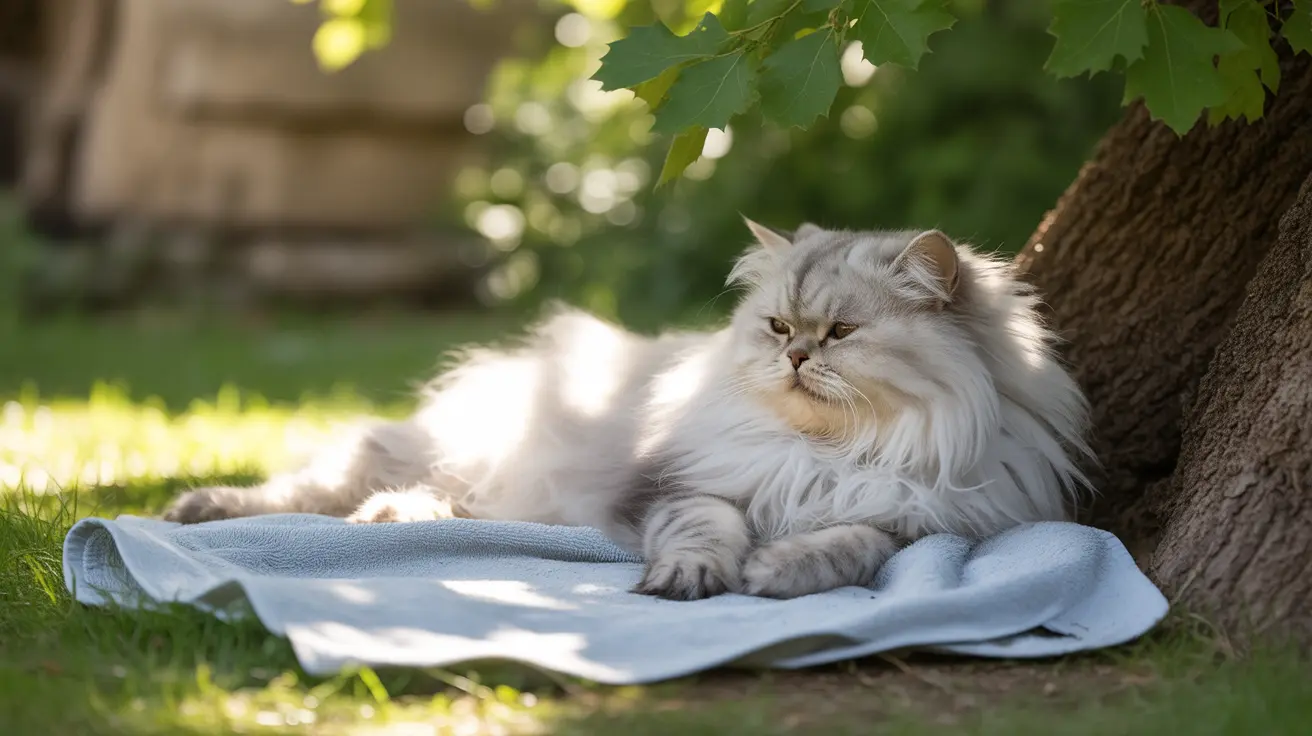Understanding Cat Heat Stroke and Its Causes
Heat stroke occurs when a cat's body temperature rises dramatically above the normal range of 101-102.5°F. This dangerous elevation typically happens when cats are exposed to excessive environmental heat without adequate means to cool down. Common scenarios include being left in parked cars, confined to poorly ventilated spaces, or exposed to intense summer heat without access to shade or water.
Certain cats face higher risks of heat stroke, including:
- Persian and Himalayan breeds with thick or long coats
- Overweight or obese cats
- Elderly cats or very young kittens
- Cats with existing health conditions, especially respiratory or cardiac issues
- Cats with limited access to water or shade
Recognizing the Warning Signs
Early Symptoms
Early detection of heat stroke symptoms can be life-saving. Watch for these initial warning signs:
- Excessive panting (unusual in cats and a serious concern)
- Restlessness or anxiety
- Drooling more than usual
- Sweaty paws
- Bright red tongue and gums
Advanced Symptoms
As heat stroke progresses, cats may exhibit more severe symptoms:
- Rapid heartbeat and breathing
- Vomiting or diarrhea
- Stumbling or uncoordinated movement
- Mental confusion or lethargy
- Seizures or collapse
- Unconsciousness
Emergency First Aid Steps
If you suspect your cat is suffering from heat stroke, take immediate action:
- Move your cat to a cool, quiet area immediately
- Apply cool (not cold) damp towels to their ears, paws, and belly
- Use a fan to increase air circulation
- Offer fresh water but don't force drinking
- Contact your veterinarian immediately
Avoid using ice-cold water or ice packs, as these can cause shock and actually slow down the cooling process. Monitor your cat's temperature if possible, and stop cooling efforts once it reaches 103°F to prevent hypothermia.
Professional Veterinary Treatment
Veterinary care for heat stroke typically involves:
- Intensive cooling measures
- Intravenous fluid therapy
- Oxygen supplementation if needed
- Blood work to assess organ function
- Treatment for potential complications
The veterinarian will monitor your cat closely for signs of organ damage, particularly to the kidneys and liver, which are commonly affected by heat stroke.
Prevention Strategies
Preventing heat stroke is far better than treating it. Implement these crucial preventive measures:
- Ensure constant access to fresh, cool water
- Provide multiple shady spots both indoors and outdoors
- Never leave your cat in a parked car
- Keep indoor temperatures comfortable during hot weather
- Schedule outdoor activities for cooler times of day
- Regular grooming for long-haired cats during summer months
Frequently Asked Questions
What are the common signs and symptoms of heat stroke in cats that I should watch for?
The most common signs include excessive panting, drooling, bright red gums, lethargy, vomiting, and unsteady walking. In severe cases, cats may experience seizures or unconsciousness. Any panting in cats should be considered unusual and warrant immediate attention.
How can I provide emergency first aid to my cat if I suspect heat stroke?
Move your cat to a cool area immediately, apply cool (not cold) damp towels to their ears, paws, and belly, use a fan for air circulation, and offer fresh water. Contact your veterinarian right away, as professional treatment is essential even if your cat appears to improve.
What causes heat stroke in cats, and which cats are most at risk?
Heat stroke is primarily caused by exposure to excessive heat without adequate cooling options. Cats most at risk include those with thick coats, elderly cats, overweight cats, and breeds with flat faces. Limited access to water and shade significantly increases risk.
How do veterinarians treat heat stroke in cats, and what complications should I be aware of?
Veterinarians typically provide IV fluids, oxygen therapy if needed, and careful temperature monitoring. Potential complications include kidney failure, liver damage, brain swelling, and blood clotting disorders. Early treatment significantly improves prognosis.
What steps can I take to prevent my cat from getting heat stroke during hot weather?
Ensure constant access to fresh water and cool, shaded areas. Keep indoor temperatures comfortable, never leave cats in parked cars, and limit outdoor activity during peak heat hours. Regular grooming for long-haired cats can also help prevent overheating.






